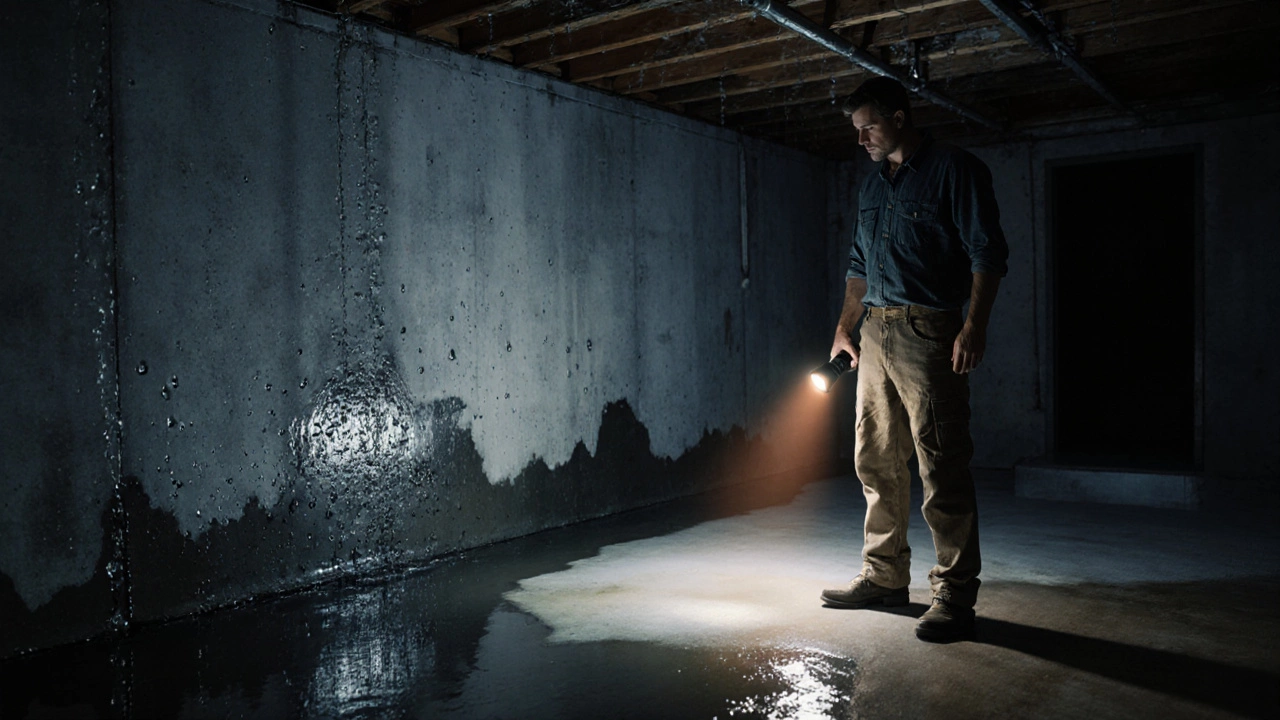French Drain: Your Home’s First Line of Defense Against Water Damage
When working with French drain, a trench filled with gravel and a perforated pipe that redirects groundwater away from a building. Also known as subsurface drain, it prevents water from pooling around foundations, basements and garden beds.
Think of a French drain as a simple yet powerful drainage system, an engineered network that moves excess water from vulnerable areas to a safe discharge point. It works hand‑in‑hand with waterproofing, the set of methods that stop moisture from penetrating walls and floors. When waterproofing meets a well‑designed drainage system, the result is a dry basement, a stable foundation, and fewer costly repairs.
Why It Matters for Foundations and Grading
Every homeowner worries about foundation cracks, basement leaks, or soggy yards. Those problems often trace back to two core issues: poor landscape grading, the slope of the ground around a structure that directs water flow, and inadequate water diversion. A French drain corrects both by creating a controlled path for water, reducing hydrostatic pressure on walls, and keeping the soil around footings dry. In plain terms, it helps keep your foundation solid and your garden usable even after a heavy rain.
When grading slopes toward a house, water pools at the base, finding the easiest entry point—often the foundation crack. Installing a French drain at the foot of the wall changes that equation: water is captured in the gravel matrix, runs into the pipe, and is carried away to a storm drain or lower‑lying area. This simple intervention also supports foundation repair, the process of fixing cracks, stabilizing footings and reinforcing structural integrity by lowering the moisture content that accelerates deterioration.
Beyond foundations, a French drain can protect rear‑yard patios, pool decks, and even shed bases. The key is designing the system for the specific site—choosing the right pipe diameter, ensuring a proper slope (usually 1% to 2%), and surrounding the pipe with washed‑out gravel for maximum flow. Many homeowners pair the drain with a sump pump for added security: if water reaches the lowest point, the pump lifts it out and discharges it safely.
Installation doesn’t require a crew of engineers, but it does need some planning. Start by marking the trench path, aiming for a route that connects high‑water zones to a lower exit. Dig the trench at least 6‑12 inches wide and deep enough to accommodate the pipe and a couple of inches of gravel on top. Lay a geotextile fabric first, add a base layer of gravel, place the perforated pipe (holes down), cover with more gravel, and wrap the top with the fabric to keep soil out. Backfill the rest with soil, and you’ve got a functional French drain.
Maintenance is equally straightforward. Check the outlet regularly to ensure it isn’t clogged with leaves or debris. If you notice slower drainage after a storm, a quick flush with a garden hose can clear blockages. In regions with freezing winters, wrap the pipe or use a frost‑proof design to avoid ice build‑up that could halt flow.
By now you should see how a French drain links three major concepts—drainage systems, waterproofing, and proper grading—to protect a home’s structure. The articles below dive deeper into related topics: choosing the right pipe material, budgeting for installation, comparing French drains to other waterproofing methods, and real‑world case studies of foundation repair after water damage. Whether you’re a DIY enthusiast or planning to hire a pro, the next reads will give you the details you need to make an informed decision.
Stop Interior Foundation Leaks: Proven Repair Methods & DIY Guide
- Gavin Whitaker
- |
- |
- 0
Learn practical ways to stop interior foundation leaks-diagnose the cause, install sump pumps, French drains, crack injection, and improve drainage with clear step‑by‑step guidance.
View more